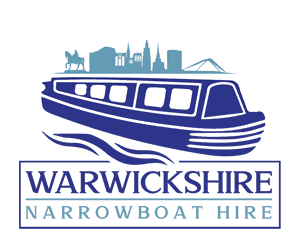Exploring the Fascinating Link Between Canals and English Folk Art
Find the Perfect Amenities for Your Narrowboat Adventure
At first glance, there doesn’t seem to be much connection between the history of England’s canals and folk art. However, the great canal network that was constructed during the height of the Industrial Revolution gave birth to a distinctive branch of narrowboat folk art.
This tradition can still be seen today in the brightly coloured artwork and lettering of some canal boats that are often hired as leisure craft.
This legacy is all the more surprising as the rapid industrialization of the era led to many traditional crafts falling by the wayside. One explanation is that when the canal transport network was challenged by the advent of the railways, profitability and therefore boatmen’s wages took a hit.
It became common for a boat captain to take his wife and children on boat journeys, because he could no longer afford to employ a crew. The wife would perform the unpaid labour of managing the horse and so on, and the whole family would live permanently on the boat to save the cost of buying a house on land.
This led to a rather isolated way of life. The children had no formal education and lived in extremely cramped conditions, as the boats also had to carry goods or raw materials. In response to these challenging circumstances, the boat people developed a distinct culture of their own, and took extra pride in creating beautifully clean and decorative living quarters.
The barge homes were carefully painted with bright colours, adorned with lace curtains and highly polished brasses, and decorated with floral motifs, animals, or romanticised scenes. One theory is that this proud richness of colour, texture and pattern was intended to compensate for a lifestyle that was lacking in any other material riches.
The folk art of England’s waterways in the mid nineteenth century is sometimes referred to as ‘Roses and Castles.’ Almost every surface, from drinking vessels to furniture and walls, was painted with naturalistic flowers or landscape scenes. The style might be described as ‘chocolate box’ as it was purely decorative rather than serving any higher artistic ambitions.
The boats themselves were painted with bright colour schemes and motifs, which is thought to be a way of identifying the locality of the boat. Some surfaces of the boat might be decorated with vibrant primary colours and chequerboard patterns, flowers, hearts, diamonds, crosses, or crescent moons.
Signwriting developed as a distinctive craft for barges and narrowboats, in order to display the name of the boat owner or carrying company, their hometown, and the name of the boat. The best examples of lettering are decorative as well as functional, with stylised fonts and shadowing to create a three dimensional effect.
The lettering may be surrounded by decorative borders featuring roses or even landscape scenes. The colourful art of the boat people may be described as naive as they lacked any formal education or training, but considering how little spare time and space they had to work in, it is remarkable to see what they achieved.
